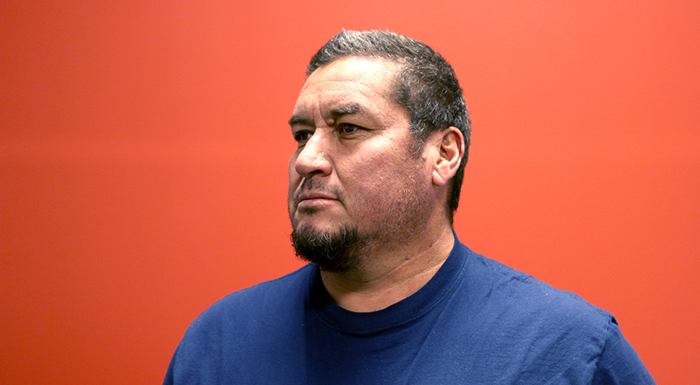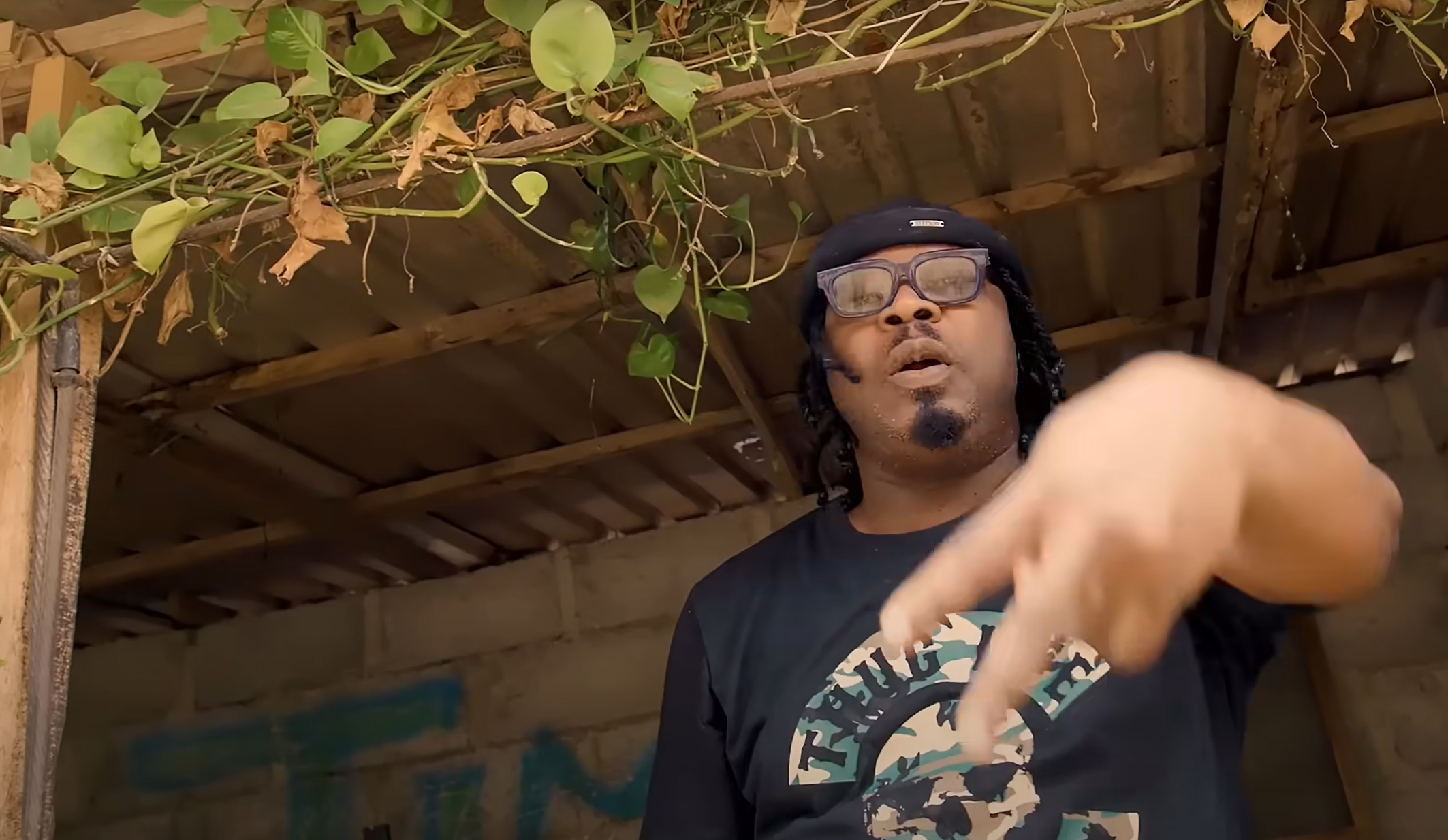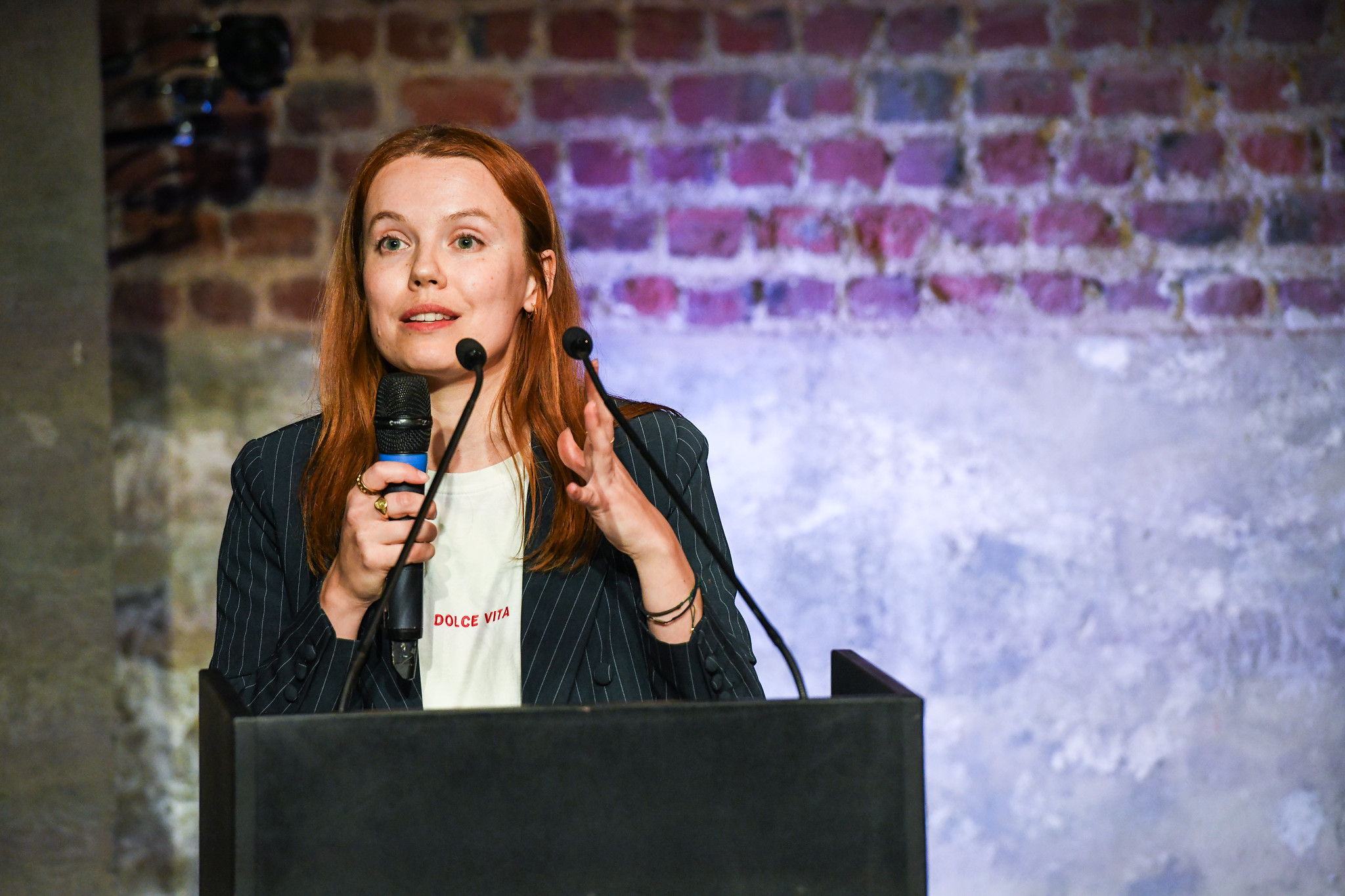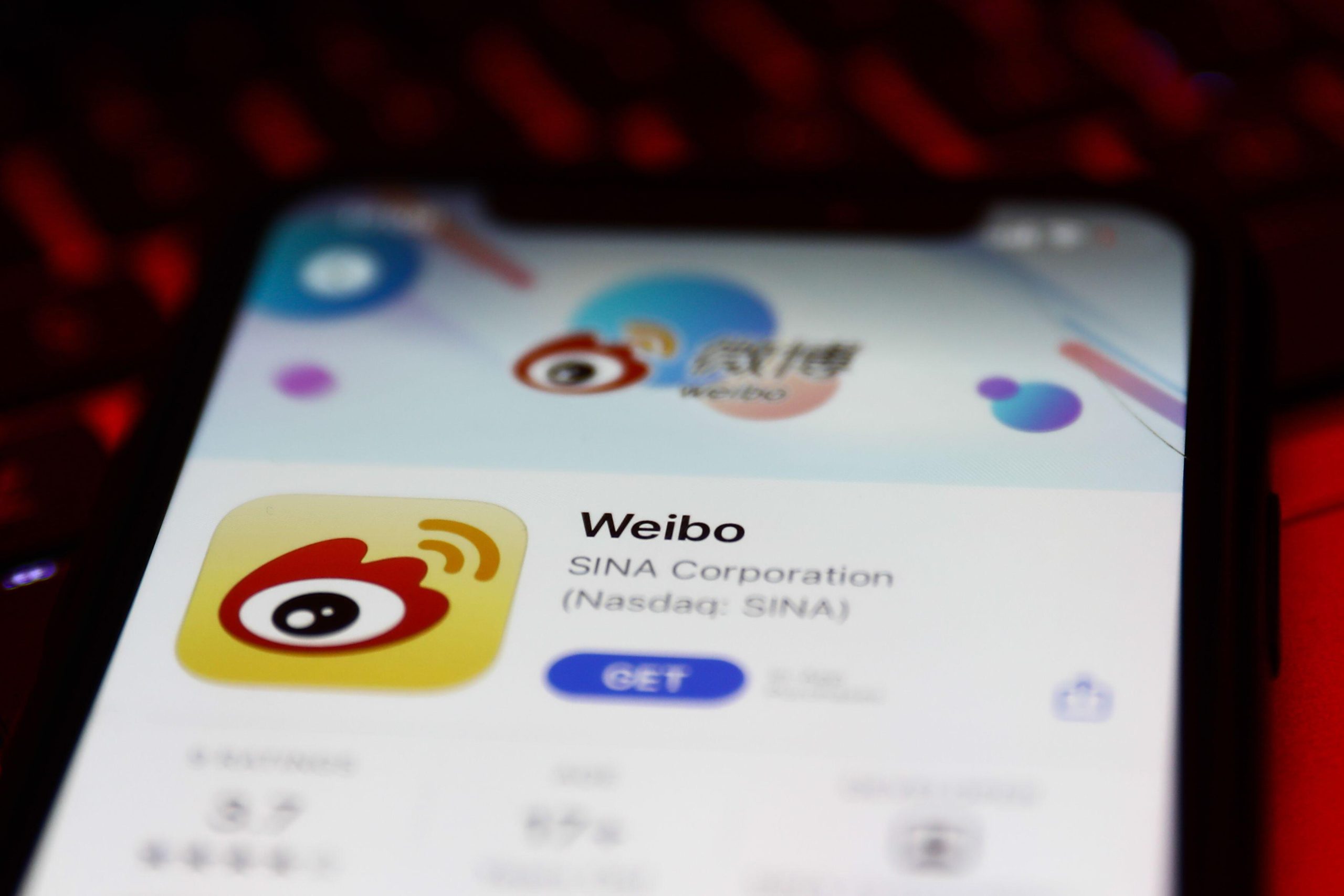[vc_row][vc_column][vc_column_text]This article is part of Index on Censorship partner Global Journalist’s Project Exile series, which has published interviews with exiled journalists from around the world.[/vc_column_text][vc_column_text]

Alejandro Hernandez Pacheco
The men from the Sinaloa cartel had made a mistake, and now they were looking to use it to their advantage.
It was July 2010, and Mexican television cameraman Alejandro Hernandez Pacheco and a colleague had been covering a riot at a prison in the town of Gómez Palacio in Durango state in northwestern Mexico. As they drove away from the prison, their car was stopped by Sinaloa gunmen, who mistook the two journalists for members of the rival Zetas cartel.
At the time, the Sinaloa cartel, led by the infamous drug lord Joaquín “El Chapo” Guzmán, were in the midst of a bloody battle for trafficking routes in northern Mexico. In 2010 alone, more than 15,000 people would die in Mexico’s drug wars. In Hernandez’s nearby home city of Torréon, where he worked for a local Televisa station, there were 990 homicides in 2011, up from 62 five years earlier, according to Reuters.
The Sinaloa men forced Hernandez and a colleague out of the car and into the trunk.
“They told us they were going to kill us because they thought we worked for the other cartel,” says Hernandez, in an interview with Global Journalist. “We told them we worked for Televisa and showed them our phones, equipment, microphones and everything. And they saw we were telling the truth.”
That didn’t mean they were safe. For days, Hernandez and two other kidnapped journalists were shuttled from a series of Sinaloa safehouses, where they were beaten and threatened with death. Héctor Gordoa, a Mexico City-based Televisa reporter who had been working with Hernandez, was released on the condition that he file a report detailing collaboration between government officials and Sinaloa cartel’s rivals, the Zetas. Hernandez and fellow journalist Javier Canales were kept by the cartel as hostages.
When Televisa refused to air Gordoa’s report, some feared Hernandez and Canales would be killed. Instead, they were released. According to Gordoa, the cartel had determined that killing journalists would do them more harm than good.
As for Hernandez, he and his family fled to the U.S., where was granted asylum in 2011. Now working as a cameraman in Colorado, he spoke with Global Journalist’s Astrig Agopian through a translator about his kidnapping and flight. Below, an edited version of their interview:
Global Journalist: How did the cartels affect you as a journalist before you were kidnapped?
Hernandez: It was good and normal before the war between the narcos started about ten years ago. Torréon was a small town in a peaceful region. But in 2007 the violence arrived there. There were a lot of narcos, but there was no problem because the people did not mess with them and they did not mess with the people. But another cartel, the Zetas, arrived from the northeast of the country.
Then the war started between them and El Chapo’s band, the Sinaloa cartel. There started being murders, abductions, kidnappings…and that is when the fear started spreading in the population. There were killings everyday. Murders with a lot of sadism. It was not like just a bullet in the head, people were beheaded or they would take their eyes out.
GJ: How did the media you worked for cover this?
Hernandez: At the beginning, everything was okay. We would cover the assassinations and not include the names of the team who worked on the story to protect them. We started to get used to the reign of the narcos, the war, all the dead.
The problems started in 2009 when a colleague from a newspaper, Eliseo Barron, was kidnapped and killed. He was a police reporter for a newspaper in Torréon. We knew the narcos did it, but we didn’t know which group.
There were killings outside of television stations and newspapers. They used “mantas,” which are pieces of tissue where it was written that what happened to Eliseo will happen to others too if they don’t keep silent. So then many journalists started being scared.
GJ: What story were you working on when you were kidnapped?
Hernandez: A journalist came from Mexico City who worked for the [national] program “Punto de Partida,” or “Starting Point.” The host of the program sent people to Torréon to cover the narcos. The reporter [Héctor Gordoa] arrived, but without a cameraman because he missed the flight. He came to ask for help from the Televisa station where I worked. They asked me to go with him.
Our intention was to interview the mayors of the three cities: Lergo, Durango, Gomez Palacio, Durango and Torréon. The mayor of Gomez Palacio took a long time to receive us. When we left him, we were told that there was a riot in the CEFERESO [a federal prison].
We decided to go to the jail and do interviews. There were many relatives of the prisoners there, because there were reports of shots fired inside and they were crying and there was a lot of security. But with all the army and the security we felt safe.
When we [Hernandez and Gordoa] left the area, it was like 3 p.m. and two miles ahead, at a traffic light, we were intercepted by a car and some guys got out with guns and got in our car. They put me and my colleague in the trunk.
GJ: What happened next?
Hernandez: They told us they were going to kill us because they thought we worked for the other cartel [the Zetas]. We told them we worked for Televisa and showed them our phones, equipment, microphones and everything. And they saw we were telling the truth.
They still said they would kill us. They covered our eyes with cloth and tied our hands and feet. Then they put us in a truck and made some telephone calls. I don’t know if they were calling El Chapo or whoever.
On the Monday [July 26, 2010] when they took us, they called Televisa and told them that they had us and they would kill us if the network continued to publish stories about them. They said they wanted us to do a video for YouTube in which we would incriminate the Zetas with the [state] government of Coahuila.
We did a 15-minute video on Tuesday and Televisa broadcast it late at night..At this point, nobody knew we were hostages besides my family, the other’s families and Televisa.
GJ: So they used you to try to blackmail Televisa into broadcasting reports that would hurt a rival cartel?
Hernandez: On Wednesday, they wanted us to record another report [implicating the Zetas with additional government officials]. But Televisa refused, saying: ‘We won’t be responsible if something happens to them, because we [the network] cannot continue to be hostages of the narcos.’
The police were supposedly looking for us. We expected them to rescue us. They kept us in a room 4 meters by 4 meters. There were us three journalists, three kidnapped policeman, and a taxi driver. We were seven total. It was the summer and it was so hot. They gave us some water but nothing to eat. If you wanted to sleep or sit you had to ask for permission. We could not go to a bathroom, we had a paint bottle and that’s it.
They psychologically tortured us because they were saying they would kill us. If [narcos] kill you during the day, they will leave your body outside. But if not, they hide your body.
What I really hoped, what I prayed for was that if they killed me, they would leave my body in sight so that people would find me and recognize me and that way I would not be a ‘desaparecido.’ That is so much worse for the families, worse than them knowing that you are dead.
We were very tired but we could not sleep at night because we were afraid they would take us and kill us.
GJ: How were you released?
Hernandez: The journalist from Mexico City [Héctor Gordoa] was released on Thursday [July 29, 2010]. They took us [Canales and Hernandez] to another safehouse. We were fragile like drunk people because we did not have food or enough water for days. We had no energy. They put us in a dark, abandoned room like a bathroom. It was dark, but I remember that there were cockroaches and animals there.
It was the middle of the night and we just wanted them to kill us because we were so tired of all the uncertainty. One moment they wanted to kill us, then they didn’t, then they did again.
We started screaming because there were neighbors. We shouted: “We want water! We want water!”
We tried to escape, tried to open the door. Someone arrived with a truck, and they started beating us. All the things they had not done the days before, they did that night. They bound us with wire by our hands and feet.
After the beating, they treated us very well. They gave us water and we were taken to yet another safehouse on Friday night. But there was blood all over the room where we were taken. There was a scalp. We thought that is where they tortured and killed people.
There was a person taking care of us, who even gave us water…a gallon of water for each of us. I told myself: ‘I want to escape, I’m not going to let them just kill me.”
But I didn’t succeed. I was at peace though because at least I tried. That was the moment when I could finally sleep. I do not know how many hours.
At that time, the government and El Chapo’s cartel must have been in talks [to arrange our release]. Next, they took us back to the safehouse where we had been earlier. The federal police were already there. It seemed they were there to pretend it was a rescue – I don’t know if the narcos were late bringing us back or the police came early. [When we were handed over] the police said: “Oh that’s you guys! Where were you detained? How are you?”
It was like a movie. We were free.
The police took us to do a press conference in Mexico City. They said they had rescued us and that there had been no shooting, and that the narcos did not do anything to us and that they released us because [the government] asked them to.
GJ: How did you decide to go to the U.S.?
Hernandez: They released me [Saturday July 31, 2010] and the police took me to Mexico City. I spent about 20 days total in Mexico City with my family.
The police caught some suspects. It was actually the ones who held us as prisoners. We went and identified them. But you know for drug traffickers, the guys with the guns are just soldiers. The boss turned them over.
During that time, I made calls to El Paso, Texas where I have family. They put me in touch with a great lawyer, who saved my life. I talked with my wife and lawyer and we decided not go back to Torréon. I took a truck, then a bus, then I walked.
I crossed the border on Aug. 22 to Texas with a tourist visa and then started the process to get political asylum. On Aug. 23, [the Sinaloa cartel] started looking for me. On Aug. 24, my wife crossed with our small children. We only took a small bag with clothes for the children and a folder with all the proof of what happened to me, pictures and articles in the newspapers. I asked for asylum in Houston.
GJ: How are things for you now?
Hernandez: Now I am a U.S. resident. I would love to be able to go back [to Torréon] but I cannot. I am angry at everyone, the police and the narcos, because my sons had to leave our home.
My children gave me a lot of courage. It was hard to arrive in another culture. My sons now go to school and speak English. When I arrived I worked at a local Spanish TV station in El Paso until 2015. Then I was offered a job in Colorado. Now I live there with my family and work as a cameraman. I am very grateful to this country because I arrived with a small suitcase and now we have a house, I have opportunity here.
With translation by Maria F. Callejon[/vc_column_text][/vc_column][/vc_row][vc_row][vc_column width=”1/2″][vc_video link=”https://youtu.be/tOxGaGKy6fo”][/vc_column][vc_column width=”1/2″][vc_column_text]Index on Censorship partner Global Journalist is a website that features global press freedom and international news stories as well as a weekly radio program that airs on KBIA, mid-Missouri’s NPR affiliate, and partner stations in six other states. The website and radio show are produced jointly by professional staff and student journalists at the University of Missouri’s School of Journalism, the oldest school of journalism in the United States. [/vc_column_text][/vc_column][/vc_row][vc_row][vc_column][vc_custom_heading text=”Don’t lose your voice. Stay informed.” use_theme_fonts=”yes”][vc_separator color=”black”][vc_row_inner][vc_column_inner width=”1/2″][vc_column_text]Index on Censorship is a nonprofit that campaigns for and defends free expression worldwide. We publish work by censored writers and artists, promote debate, and monitor threats to free speech. We believe that everyone should be free to express themselves without fear of harm or persecution – no matter what their views.
Join our mailing list (or follow us on Twitter or Facebook) and we’ll send you our weekly newsletter about our activities defending free speech. We won’t share your personal information with anyone outside Index.[/vc_column_text][/vc_column_inner][vc_column_inner width=”1/2″][gravityform id=”20″ title=”false” description=”false” ajax=”false”][/vc_column_inner][/vc_row_inner][vc_separator color=”black”][/vc_column][/vc_row][vc_row][vc_column][vc_basic_grid post_type=”post” max_items=”6″ style=”load-more” items_per_page=”2″ element_width=”12″ grid_id=”vc_gid:1518457289356-25c6c2e3-cfc2-10″ taxonomies=”22142″][/vc_column][/vc_row]




